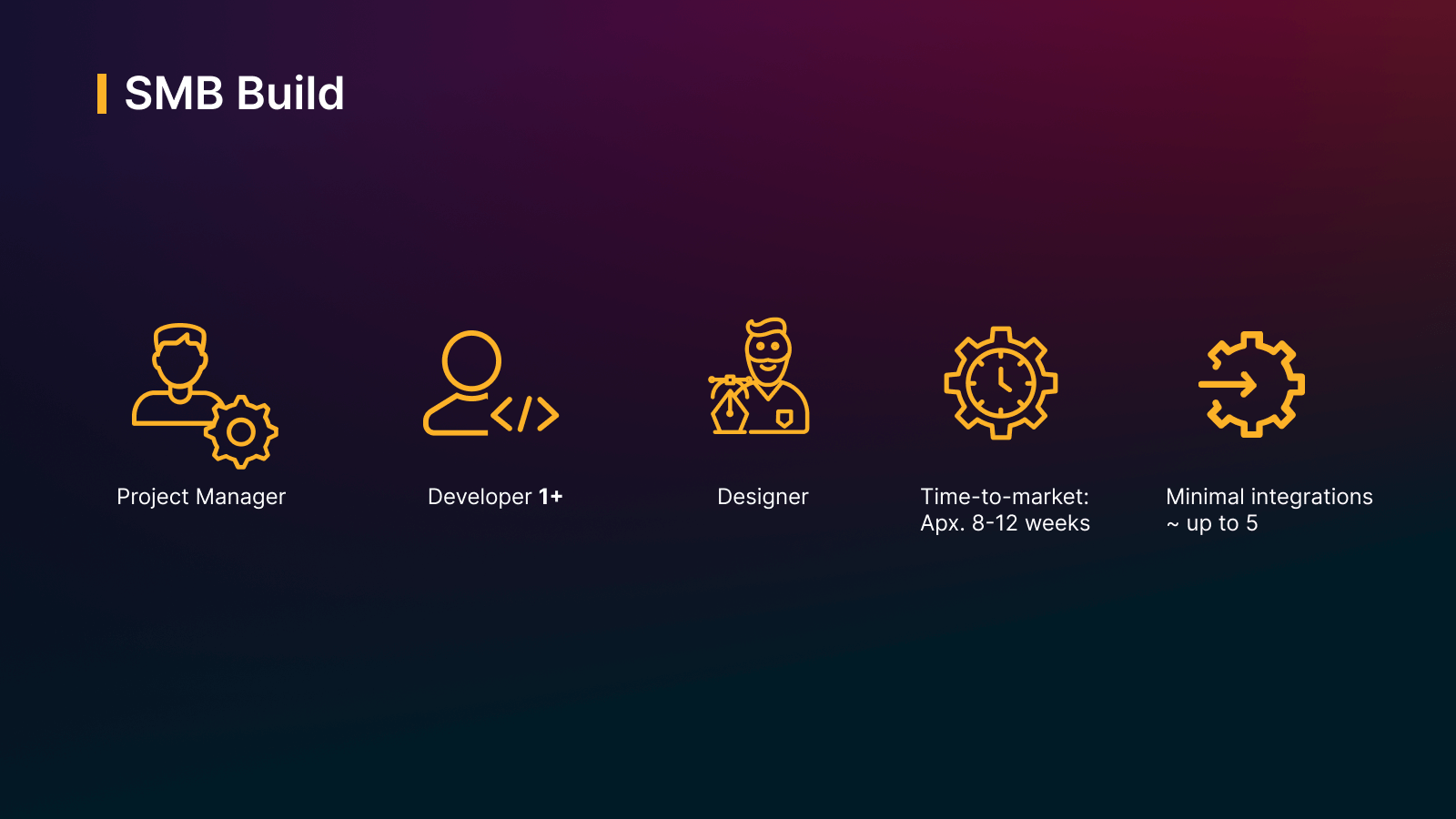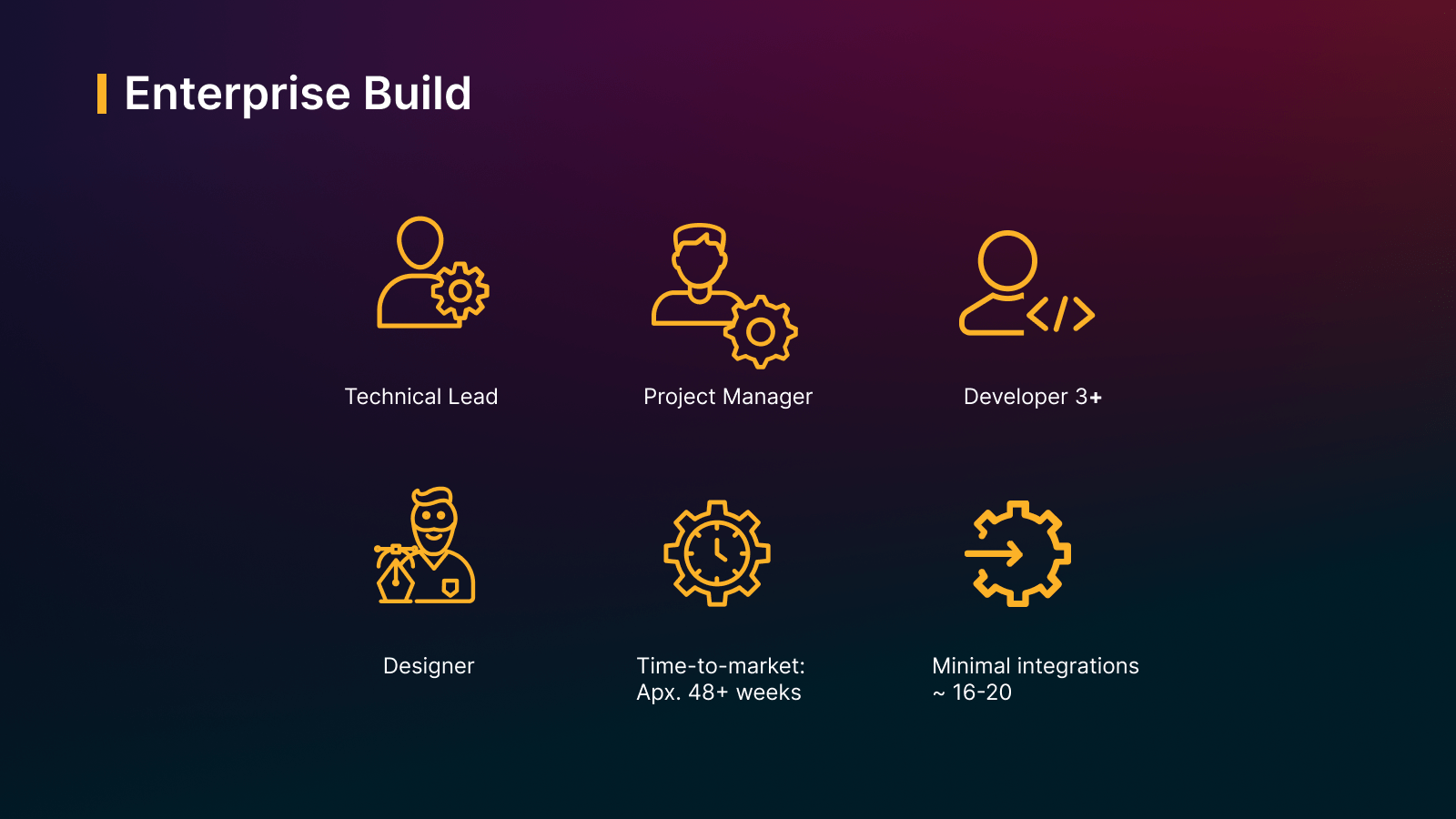Choosing a robust headless commerce platform is step one on your journey to composable commerce. To bring your headless commerce goals to fruition, you’ll need a strong team in place for implementation, be it in-house or partnering with an experienced system integrator/agency partner, on design, development, or both.
With several years of headless commerce experience under our belts, we know what helps make a headless commerce implementation smooth and successful. Unsurprisingly, talented people are at the core. Today we’ll outline the typical “rockstar-required” positions, so you know how to stack your team when undertaking a headless implementation.
Many merchants end up hiring specifically for the implementation and maintenance of their new site, but as we mentioned earlier, working with an experienced, vetted agency partner is always an alternative. At Nacelle, there’s also an opportunity to add an implementation package and work directly with a Nacelle Solution Architect during the build.
First and foremost, keep in mind that as you build and implement your headless architecture, your existing site must still be operational simultaneously. Make sure you have a plan to dedicate resources to both your existing store, and your build. Competing priorities between an existing webstore and a new build is a top pitfall during headless implementation. Read on for what to expect during a headless build.
Table of Contents
Headless commerce implementation: what to expect
While buying and customizing a robust headless commerce solution like Nacelle will likely have a faster time-to-market compared to building a custom headless solution from scratch, it still takes time, planning, expertise, and management. But don’t let that scare you off, you have resources! Be it the Nacelle team or an agency partner, there’s a hand to hold through the process if you want it.
If you need to get up and running really quickly, consider saving branding and design changes for later, and doing a pixel-to-pixel build. Other eCommerce merchants take a “Phase One, Phase Two” approach, or a minimal viable product (MVP) approach for launch followed by rolling out additional features and functionality after go-live.
Here’s a general idea of what you can expect during your headless implementation.
-
Scoping: Before diving into planning your build, we recommend spending at least a week scoping the project. This includes outlining functional requirements, defining success metrics, and setting a schedule. Before setting your schedule, think about when you want to go live. Is it before a sizable summer or holiday sale? Is there a big media push on the horizon? If so, be sure to take that into account.
-
Planning: The planning stage is crucial to your headless build and can last up to four weeks. This is where stakeholders will make decisions around content modeling, data modeling, and mapping user stories for your development team. Teams need to take inventory of what and how the content management system (CMS) should function from a visual and functional merchandising perspective. Anyone who touches your website is considered to be a stakeholder in how it should function, including development, marketing, merchandising, and design.
-
Building: Finally, the long-awaited build phase! The actual build itself can take anywhere from 2 to 6 months depending on the team you have in place and the type of build you’re doing—for instance, if you’re doing a pixel-to-pixel build in order to get up and running as soon as possible, this stage will be on the faster end of the spectrum. This is where your development team, be it in-house or in partnership with an agency, will build your progressive web application (PWA), customize your website’s front end, conduct third-party application integrations, and create design assets. Your design team should be working in parallel with the development build to build out specific content that will be merchandised later on the pages once the site is built.
-
Pre-launch: This stage typically lasts 1 to 2 weeks, and it’s crucial. This is where your team will perform user acceptance testing (UAT), pre-launch audits, and ensure checklists are complete. You need to make sure that everything functions appropriately in both design and development and that any requirements you had going into the project are met.
-
Launch!: The act of actually launching your new headless site is seamless and near-instantaneous. Most merchants choose non-peak traffic hours to play it safe, but pre-launch testing typically protects against any issues arising at launch time.
-
Post-launch: Once your site is live and firing on all cylinders, you’ll want to conduct a post-launch audit. This is where ongoing maintenance and adding new experiences, features, and/or functionality to keep an engaging customer experience on-site will occur. Some merchants choose to roll out additional features right away, others choose to wait a little longer. A post-launch audit also monitors tracking and analytics. Are you seeing increases in sales, average order value, or conversion rates? Our merchants typically see a 25% to 35% increase in conversion rate on average, as well as significant boosts to other eCommerce KPIs and improvements to developer workflow.
Headless commerce build team
The estimates below are conservative, and many small- and medium-sized companies will typically have more than the minimum that’s outlined in this section. We can’t speak to other platforms that require data migrations or custom builds, but from our experience, we categorize “small” as SMB brands, “medium” as hyper-growth/scaling brands, and “enterprise” as brands with revenue over $100 million.
SMB Build

-
Project manager
-
Experienced Frontend or Fullstack Developers (1 minimum, though 2 is preferred)
-
Designer (if redesign or design refresh is applicable)
-
Time-to-market: Apx. 8-12 weeks
-
Minimal integrations ~ up to 5
Hyper Growth Build

-
Technical Lead
-
For hyper-growth/scaling brands, a technical lead in addition to a project manager is a great asset, especially if there are multiple developers working on the build.
-
Enso Rings, for example, had an extremely successful implementation due in part to Nathan Call acting as the team’s technical lead. Call’s experience with headless builds allowed him to navigate Enso’s path to headless and seamlessly lead his team to get up and running quickly.
-
-
Project Manager
-
Experienced Frontend or Fullstack Developers (1 minimum, though at least 2 devs are highly recommended)
-
Designer
-
Time-to-market: Apx. 24 weeks
-
Integrations ~ 6-15
Enterprise Build

-
Technical Lead
-
Project Manager
-
Experienced Frontend or Fullstack Developers (2 minimum)
-
Designer
-
Time-to-market: Apx. 48+ weeks
-
Integrations ~ 16-20
Using an agency to help with headless commerce
Many successful merchants will tap a vetted agency partner with headless build experience to assist with their build if they don’t have the resources or specialized expertise available in-house. This might mean tapping one or two different agencies for design and/or development, though there are agencies that do both such as We Make Websites, Zehner, Scoutside, and Vaan Group.
Using an agency doesn’t mean you have to pass the reigns over entirely. Many merchants will supplement their teams with an agency and exercise co-development to get the job done faster. One benefit of co-development is that you can ramp up your in-house development team much faster. As they become intimate with the codebase, they can easily transition into maintaining and building upon the foundation post-launch.
Once the site is live, remember that there will be ongoing maintenance and new features and functionality to be added, but the maintenance team doesn’t necessarily have to consist of the same people on the build team. Maintenance includes adding new features and it’s also possible to supplement maintenance with an agency for day-to-day help if needed after go-live. Conversely, you can also tap an agency for the build and transition to in-house maintenance.
Nacelle + implementation
Our Solutions Architecture team is dedicated to helping our merchants succeed once they decide to go headless with our platform and merchants have the opportunity to add an implementation package to their purchase. We work closely to support in-house teams and agency partners as they bring their headless webstores to fruition. We can also advise on an agency partner upon request. We want merchants going headless to feel supported and empowered as they transition to the future of eCommerce. So far, we’ve been thrilled with the feedback - check it out!
Time to go headless
Why Q4 is the Best Time to go Headless
Thinking about going headless in 2022? Q4 is traditionally known for website code freezes to guard against breakdowns during the holiday shopping rush. We’re not suggesting you throw caution to the wind during the busiest time of year. But you can get the best of both worlds—focus in-house resources on your existing site during the holidays, and leverage an agency to do a headless build in the background, at the same time. With this strategy, you can start 2022 off to an exciting start!